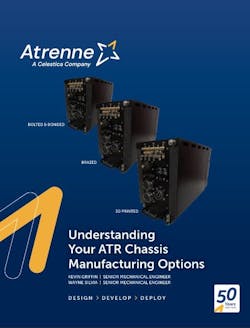ATR Chassis Manufacturing Options
Air Transport Rack (ATR) chassis are now the most prevalent enclosure for all deployed defense electronic systems beyond airborne purposes. They consistently provide the highest environmental protection while preserving packing density and thermal performance. The growing number of ATR deployments has spurred manufacturing technological advances, resulting in multiple ATR chassis production alternatives, including brazed welding, bolted and bonded, and 3D printed. The optimum choice for any program necessitates examining such pluses and deltas considering its unique needs. This whitepaper discusses each production method and the pros and cons.
No longer just for airborne applications, Air Transport Rack (ATR) chassis have become the most common type of enclosure for all types of deployed defense electronic systems. They have established a track record of offering the highest level of environmental protection while maintaining exceptional packaging density and thermal performance. The increasing number of ATR deployments has driven innovations in manufacturing technology, so that now there are distinct options for ATR chassis production.
Each manufacturing option has advantages as well as limitations. Making the best choice for any specific program requires analyzing those pluses and deltas in the context of the program’s unique requirements. Atrenne Computing Solutions has delivery capability and experience with all three options. Using that experience, this paper will examine the benefits and design trade-o s of each option, so that program managers and executives can make an informed decision on which will work best for their situation.
